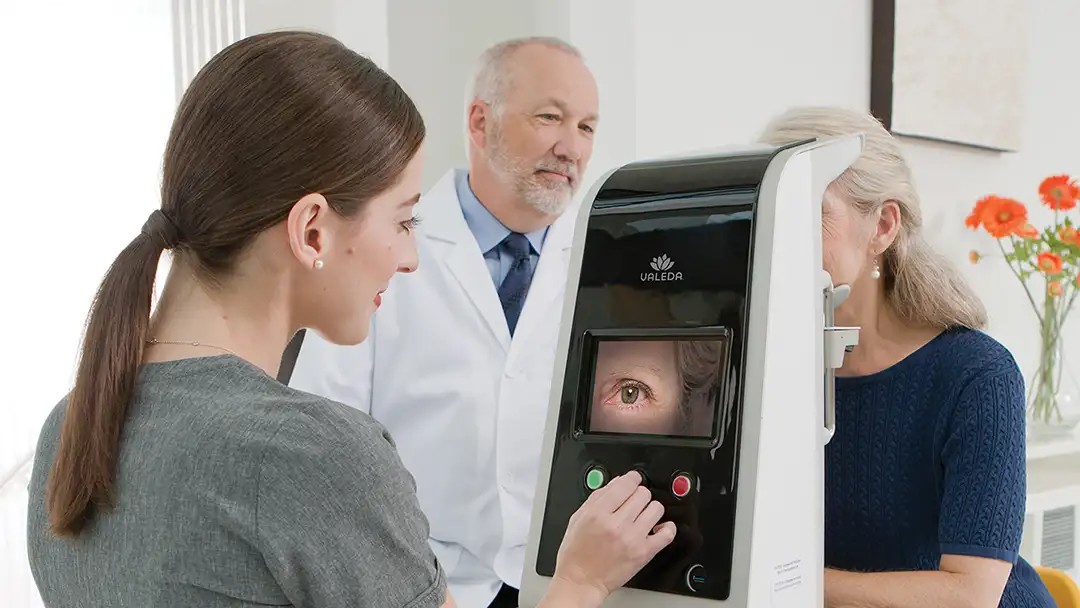
If a close relative has macular degeneration, learn some important steps that you can take to decrease your risk of developing this eye disease.
This is a question often asked by family members of patients with age-related macular degeneration (AMD). It’s a good question, since AMD risk is influenced by genes, which, unfortunately, we can’t control. However, the risk is also strongly affected by environment, which we can. Since some of the genetic risk is attributable to genes involved in inflammation, behavioral measures to counter that inflammation are likely to reduce the risk.
Stop Smoking
The greatest environmental risk is smoking, which is likely due to inflammation caused by cigarette smoke. For smokers, by far the most important way to decrease risk is to do everything possible to stop smoking.
Watch Your Weight
Another environmental risk is obesity, which is also associated with increased inflammation. Losing weight through a healthy diet (see below) and exercise is likely to decrease risk.
Dietary Factors
Epidemiological studies have shown that certain diets high in fruits and vegetables are associated with reduced risk. Also, fatty fish (salmon, tuna, mackerel, or sardine) consumption twice a week appears to reduce risk. Avoiding a high glycemic index diet (foods that contain simple sugars, such as cakes, cookies, snack food, pasta, and bread) is also likely to reduce risk. In contrast, one study showed that a diet high in red meat was associated with increased AMD risk.
My brother, David Dunaief, MD, and I have studied the effects of a vegetable-rich diet including a daily smoothie, and published articles showing that it decreases levels of a blood test that measures inflammation, called C-reactive protein (CRP). This may decrease the risk of AMD, as AMD is associated with high CRP and systemic inflammation.
Sunlight Exposure
An epidemiological study showed that a lifetime of bright light exposure, especially blue light exposure, may increase risk. Wearing gray or brown-tinted sunglasses and a hat would diminish this risk. Patients undergoing cataract surgery may elect to have yellow-tinted plastic lenses implanted into their eyes, blocking blue light. This effect may also be achieved by wearing sunglasses or transition lenses that become darker when you go outside.
When are Vitamins Helpful?
Some patients with AMD who have a certain number of whitish spots, called drusen, visible to the eye doctor during a dilated eye exam, can reduce their risk of progressing from the intermediate to the late stage of AMD by 25 percent by taking the AREDS2 antioxidant vitamins formula. Should family members with no drusen also take these vitamins? The answer is no, as there is no evidence that people with no drusen would have decreased risk if they started the vitamins at a younger age. Also, it is unclear whether AREDS2 vitamins would be safe if taken every day for several decades.
Family members should have annual dilated eye exams beginning at about age 50 to check for drusen. If a certain number of drusen form, then AREDS2 vitamins should be started.
How to Monitor Your Vision
You can also monitor your vision at home, and get an eye exam if you notice any change. A good way to do this is to cover one eye at a time and look at a page of print on a computer screen, newspaper, or book. If any of the words are missing, wavy, or blurry, have your eyes examined. Don’t panic, however, as there are many common causes for blurry vision, including needing new glasses or cataracts (cloudiness of the lens inside the eye), both of which usually can be remedied easily. Another way to check your vision is to look, covering one eye at a time, at the graph called an Amsler grid, which has most likely been provided to your affected family member. If not, you can download the Amsler grid here. If you see any missing or wavy lines, get an eye exam.
An electronic, home monitoring device can also help you monitor your vision for changes that may require treatment. It projects straight lines onto your retina, and you tell the device whether you see the line as straight or wavy. The device records changes over time. See: https://www.foreseehome.com
Summary
Many of the things you can do to decrease your AMD risk will also decrease the risk of other diseases: stop smoking, eat lots of vegetables and fruits, and get regular exercise.
About BrightFocus Foundation
BrightFocus Foundation is a premier global nonprofit funder of research to defeat Alzheimer’s, macular degeneration, and glaucoma. Since its inception more than 50 years ago, BrightFocus and its flagship research programs—Alzheimer’s Disease Research, Macular Degeneration Research, and National Glaucoma Research—has awarded more than $300 million in research grants to scientists around the world, catalyzing thousands of scientific breakthroughs, life-enhancing treatments, and diagnostic tools. We also share the latest research findings, expert information, and resources to empower the millions impacted by these devastating diseases. Learn more at brightfocus.org.
Disclaimer: The information provided here is a public service of BrightFocus Foundation and is not intended to constitute medical advice. Please consult your physician for personalized medical, dietary, and/or exercise advice. Any medications or supplements should only be taken under medical supervision. BrightFocus Foundation does not endorse any medical products or therapies.
- Dry AMD
- Eye Health
- Genetics
- Prevention
- Wet AMD









